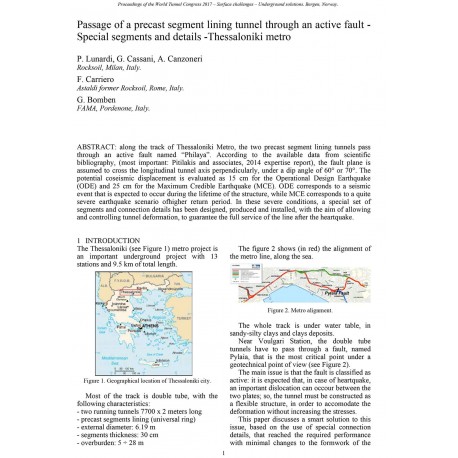Cart
0
0
No document
0,00 €
Total
Document successfully added to your shopping cart
Quantity
Total
There are 0 items in your cart.
There is 1 item in your cart.
Total documents
Total shipping
To be determined
Total
Search & filter
Search for a publication
Search & filter

Passage of a precast segment lining tunnel through an active fault - Special segments and details – Thessaloniki metro
14932_passage_of_a_precast_segme
G. Cassani / P. Lunardi / A. Canzoneri / F. Carriero / G. Bomben
Along the track of Thessaloniki Metro, the two precast segment lining tunnels pass through an active fault named “Philaya”. According to the available data from scientific bibliography, (most important: Pitilakis and associates, 2014 expertise report), the fault plane is assumed to cross the longitudinal tunnel axis perpendicularly, under a dip angle of 60° or 70°. The potential coseismic displacement is evaluated as 15 cm for the Operational Design Earthquake (ODE) and 25 cm for the Maximum Credible Earthquake (MCE). ODE corresponds to a seismic event that is expected to occur during the lifetime of the structure, while MCE corresponds to a quite severe earthquake scenario ofhigher return period. In these severe conditions, a special set of segments and connection details has been designed, produced and installed, with the aim of allowing and controlling tunnel deformation, to guarantee the full service of the line after the heartquake.


